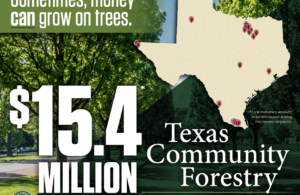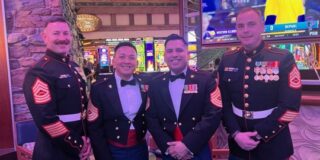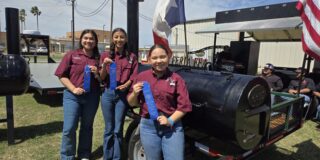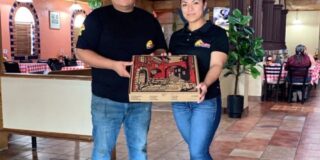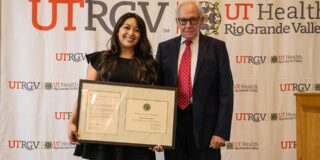- La Feria Native Soon To Retire From The Military This Summer
- Senior Eneece Avila Takes Pride in her State Title
- Dr. Noemi Infante, Harlingen Medical Center Open New Women’s Clinic
- Santa Rosa Cameron County Park Partially Reopens
- Santa Rosa Takes to Regionals Meet in Kingsville, Tx
- Long-Standing Nexstar Tower in La Feria Decommissioned
- Lionettes Powerlifting Meet
- Local Business Holds Event to Benefit RGV Shriners Club
- Knights of Columbus Holds it’s 30th Annual Golf Tournament
- KGBT Tower Dismantled
Reminiscences of Señor Sebastian Adrian Villarreal
- Updated: April 14, 2015

The city of La Feria is celebrating its 100th year anniversary and to commemorate the occasion we are digging deep into our archives each week to bring you images and stories from La Feria’s colorful past.
The following story is a chapter from a manuscript entitled The Bicentennial History of La Feria, Texas written by Eddie Gathings McNail in 1975. Throughout the coming year we’ll be reprinting sections of her research into the history of La Feria as the city celebrates its 100 year anniversary.
Sebastian A. Villarreal was born to Jose Maria Villarreal and Victoria Nettles Villarreal on La Gloria Ranch which was one-half mile east of Bluetown, Texas on the Camino Real, on February 5, 1895. He had three sisters and six brothers, all of whom are dead, leaving only one of this illustrious family. Our Lady of Visitation Church near Santa Maria was attended by the family where the children were baptized.
His father was a farmer and a rancher and was appointed a United States Customs official from 1894 until 1902. This appointment was during the presidency of William McKinley. There is a document to prove the above statements. Mr. Villarreal rode horseback on customs patrol from Boca Chica, meaning small mouth of the river, to Santa Maria, Texas. The Camino Real in those days was a dusty trail when it was dry or a mass of mud when it rained, winding along the very banks of the wild Rio Grande River.
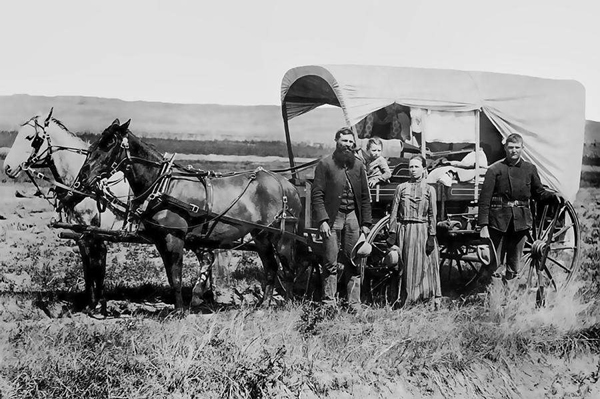
Sebastian Adrian Villarreal’s mother Victoria Nettles came to Texas from Mobile, Alabama in 1858 in a covered wagon with all the family’s belongings, their goats and horses and even a dog for protection. The picture above shows a family quite similar to the Nettle’s on their way to new land and opportunity in Texas. Photo: thestoryoftexas.com
Victoria Nettles, his mother, came to Texas from Mobile, Alabama in 1858 in a covered wagon with all the family’s belongings, their goats and horses and even a dog for protection. First the family settled in Nacogdoches, Texas and then moved to the Valley where the young couple met, fell in love and married in 1870.
‘The first cemetery around La Feria, for the newcomers, was south of town right on the “Alto de la nacahuita” which was a high spot on the Cantu Line. There were more than a dozen graves there. It was not used after the La Feria Cemetery, west of town, was opened. Now no one knows the exact location.
Long before La Feria was dreamed of, Don Anastacio Longoria, Abel Longoria’s grandfather, in 1880 built an adobe house with a thatched roof in the southeast corner of Central Park which was the highest spot in town and named it “Las Enaguas”. It meant the petticoats because he had four daughters who chopped wood, built fences, tended goats, brought water from the well and raised much corn and many watermelons. The old house was demolished in the early twenties.
The fences were a work of art because two big posts were set together a foot apart and then two additional posts were set every ten or twelve feet. Mesquite wood was packed in lengthwise between the posts, thus making a strong fence. It sometimes took a year to make a fence to enclose a garden plot.
The bambilete or well was 150 feet north of the house and was some 20 feet deep. It was dug in the form of a square and the walls were reinforced with mesquite blocks to keep them from caving in. An ingenious device was used to get the water from the well. A heavy post was embedded in the ground, a long sapling was tied with rawhide to the post with the longer part extending over the well and the shorter end fastened with a bag of rocks for weight. A smaller pole was fastened at the end of the sapling with rawhide and the bucket was secured to the end of the pole. This was lowered into the well for water and easily brought up to the surface. Of course, all of this was made by hand.
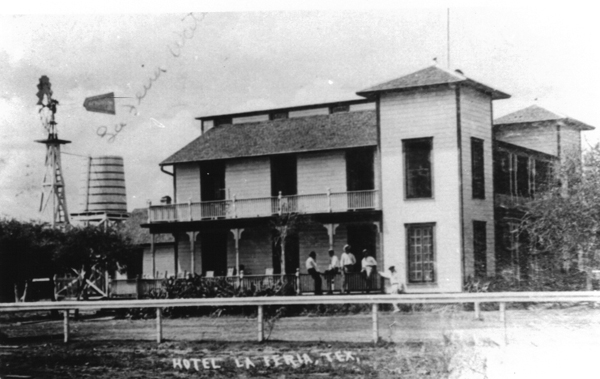
This photo of the La Feria Hotel circa 1912-1914 features what seems to be a fence similar to the kind used in horse racing. Could this have been the infamous track that was used to race horses during the 1913-1914 Fourth of July celebrations in La Feria?
In 1906, when Sebastian was eleven years old, he rode horseback through the ranches where there were adobe houses with split wood fences. There was an abundance of game and wildlife. His sister, Lucinda, married J. C. Solis the same year and moved to Santa Teresa north of La Feria.
There was an old trail from the Rio Grande River that ran through the brushland, crossed the Arroyo Colorado at Santa Domingo Ranch on Parker Road, wound west to “Candero Contaneno” or Cantu Line, crossed the railroad and ended at Santa Teresa. This was the only crossing to Santa Teresa.
In the destructive flood of 1909, the biggest ever known in the Valley, Villarreal rowed a boat from La Gloria Ranch down what is now the main street of La Feria.
Around 1913 and 1914, Fourth of July celebrations were held in La Feria on East Street from Magnolia to Commerce Streets. There were barbecues and refreshments. All the streets were dirt, but that did not deter the main event of the day, horse racing. The track was from Mrs. B. H. Dunlap’s house to Oleander Street. Great was the excitement and interest when this time arrived because there was much betting.
La Gloria Ranch sold in 1921 to Charlie Frazier, the first and well-known city marshal of La Feria. Being an unusual character, he wore a wool uniform summer and winter, but he always kept law and order.
Do YOU have any photos, books, or stories that might help us piece together La Feria’s storied history? If so please email us or call our office at 956-797-9920 and let us know!

